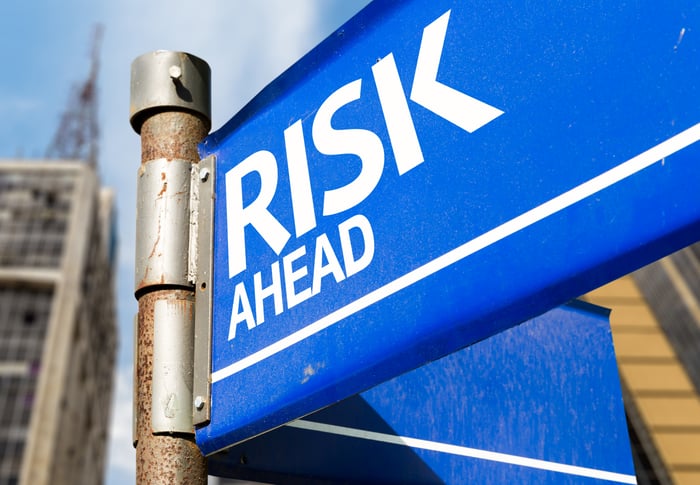Income investors seemingly have hundreds of stocks to choose from that currently pay a dividend. The telecom and utility sectors often generate some of the most robust payouts for investors, with FactSet Research data from the third quarter of 2016 showing that sector aggregate yield for telecom was double that of the S&P 500 (4%, versus 2%).
Dividend stocks are few and far between in the healthcare sector
By comparison, the healthcare sector is a major disappointment to income investors, with an average yield of about 1.8%. Scratching the surface, drug stocks would appear to be the perfect candidates to pay out a substantial yield given their exceptional pricing power, and the fact that they sell inelastic products. In other words, people can't control when they get sick or what ailment they contract, meaning demand for medicine isn't dependent on how well or poorly the U.S. economy is performing. But the data shows that drug stocks are often far from perfect dividend stocks.

Image source: Getty Images.
For instance, drug companies often have to spend a lot of their free cash flow reinvesting in new products and partnerships. Though brand-name drugs do command substantial pricing power, they also come with a finite shelf life. Once the Food and Drug Administration OKs human clinical testing for an investigational new drug, a 20-year patent clock begins ticking. Most drugs that make it to pharmacy shelves only have around a 10-year window of exclusivity before generic drugs enter the marketplace. In short, the costs of planning for the future eat up what would be the fruits that income investors would normally enjoy in the present.
However, once in a while a high-yield drug stock does come along in the pharmaceutical or biotech industry, and it often attracts dividend seekers in droves. Unfortunately, high-yield drug stocks have proven to be wolves in sheep's clothing more often than not of late.
High-yield drug stocks should come with a warning label
For example, take Teva Pharmaceutical Industries (TEVA 0.47%), which for years has been a dividend stalwart. Though the Israeli-based branded and generic drug developer paid dividends without any particular rhyme or reason from one quarter to the next, the trend on its payouts had generally been higher for years. As recently as July, the company was yielding north of 4%.

Image source: Getty Images.
Recently, the wheels fell off the wagon. You could also argue that the wagon caught fire, too, given all the problems Teva has had. During its second-quarter report, Teva announced that it was cutting its sales and profit guidance for the full year, slashing its quarterly dividend by 75%, and looking to divest non-core assets to reduce its debt by $5 billion before the end of the year. The company is currently lugging around $35.1 billion in debt tied to its acquisition of generic-drug maker Actavis, and given a weaker generic drug pricing environment, asset sales are warranted to quickly reduce its debt load. While this writer is optimistic about Teva's chances for a turnaround, its payout isn't heading higher anytime soon.
And this is far from the only instance of a drug stock with an imploding high yield. Innoviva (INVA 2.18%) and PDL BioPharma (PDLI) are both royalty companies that generate revenue from the net sales of drugs that utilize their technology. At one point, Innoviva's and PDL BioPharma's yields handily topped 6%. Today, both have completely suspended their dividends.
In the case of Innoviva, it wound up taking out a $450 million loan in 2014 to pay for a $0.25 quarterly dividend. Innoviva developed a handful of next-generation asthma and COPD therapies with GlaxoSmithKline (GSK 1.39%); however, the uptake of these next-generation medicines has been slower than expected with physicians and insurers. That slower growth forced Innoviva to end its dividend after just five quarters, but it still left the company mired in debt.

Image source: Getty Images.
As for PDL BioPharma, its primary source of revenue had been its Queen patent portfolio. In December 2015, many of these patents expired. After the sale of stockpiled medicine over the next year that contained those Queen patents, PDL saw its sales plunge by about 70%. This rapid decline in sales left management with no choice but to conserve cash to make new acquisitions, and thus cease its dividend.
Three questions you should ask before buying a high-yield drug stock
If there is a silver lining here, it's that not every high-yield drug stock is a landmine. Big pharma giants GlaxoSmithKline and Pfizer have done a generally good job of maintaining their yields thanks to the diversification of their product portfolios and pipelines. GlaxoSmithKline has leaned on its respiratory and HIV segments to drive growth, while Pfizer is counting on its oncology segment as its cash flow driver. But if you plan to invest in high-yield drug stocks, you really need to ask yourself these three questions:
- Is there an underlying issue with the company?
- Is the product portfolio and pipeline diversified?
- Is the payout ratio sustainable?
The first question might seem somewhat obvious, but investors have to examine why a company's share price has been falling (if it's been falling). Remember, dividend yield is an inverse function of price, meaning a falling share price can pump up yields. A falling share price needs to be heavily scrutinized to determine if there's an underlying issue with the business model. If there is, a high-yield may not be sustainable.

Image source: Getty Images.
Second, investors should closely examine whether a drug stock is well diversified. In the previous examples, Innoviva was wholly reliant on its partnership with GlaxoSmithKline, while PDL BioPharma relied on its Queen patents for well over three-quarters of its total sales. A diversified product portfolio and pipeline are less likely to succumb to dividend hiccups.
Finally, take a peek at the payout ratio, which is the percentage of a company's annual profits being paid out as a dividend to shareholders. Ideally, we like to see dividend companies return 50% to 75% of their earnings to shareholders as a dividend. Anything that's above 90% could be a red flag regarding the sustainability of a dividend payment.
Though not all high-yield drug stocks are trouble, the entire industry should probably come with a warning label. Stay diligent, income investors.


